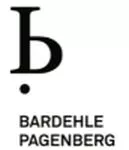- within Intellectual Property topic(s)
- in Australia
For more detailed information, read the related article by Volkmar Henke and Martin Drews: https://beck-online.beck.de/Dokument?...
It's been two years since the UPC opened its doors. You have probably heard a lot about procedural issues – like the service of Statements of Claims with Chinese defendants, court competences, deadline regime, opting-out, preliminary measures and others. These are interesting questions that are paving the way to justice, of course – but they are still not the core of patent law. The core of each patent litigation is the patent itself, and more precisely: claim construction.
This is where most patent cases are actually decided. This is why patent lawyers love what they do.
It does not come as surprise that the first UPC decisions on the merits focus primarily on this – patent interpretation.
Every patent attorney candidate learns it in their first days: Each patent specification consists of several parts. First, there is the description – accompanied by the figures – in which the inventor and/or the applicant describes the invention in relatively free words. Second, there are the patent claims which define the invention in a strict sense. Now, which of the two prevails?
A statutory answer is given in Art. 69 EPC. "The extent of the protection conferred by a European patent shall be determined by the claims. Nevertheless, the description and drawings shall be used to interpret the claims."
According to German jurisprudence, each patent is its own dictionary. The art of claim construction is to arrive at a consistent understanding of the patent claims on the one hand, and the description with figures on the other hand.
Now, the UPC seems to be very much in line with that German practice.
It was in its famous decision 10x Genomics against Nanostring that the Court of Appeal indicated the direction: The claim is not only the starting point, but the decisive basis for determining the protective scope of a European patent. However, the description and the drawings must always be used as explanatory aids and not only to resolve any ambiguities in the claim.
Following these general rules, in particular the Local Divisions of the UPC have continued developing jurisprudence and there is now an entire bunch of jurisprudence which – in the meantime – gives enough legal basis to allow for predictability. Here's what we know:
Linguistic errors and inaccuracies can be corrected by way of interpretation.
The meaning of means-plus-function features is in line with the Guidelines of the EPR.
If the description contains several embodiments which are presented as being in accordance with the invention, the claim should be interpreted in such a way that all of those embodiments are covered by the claimed teaching.
And so on, and so on.
This young Court has already established a legal practice that it rather clear-cut. Some open issues remain, though – in particular the question whether prosecution history can be used to interpret the patent.
For more details, please read the article that my colleague Martin Drews and I wrote in GRUR Patent. And, as always, follow our channel for more insights on intellectual property. We provide similar insights on a regular basis to help you navigate the complex world of patents.
The content of this article is intended to provide a general guide to the subject matter. Specialist advice should be sought about your specific circumstances.


